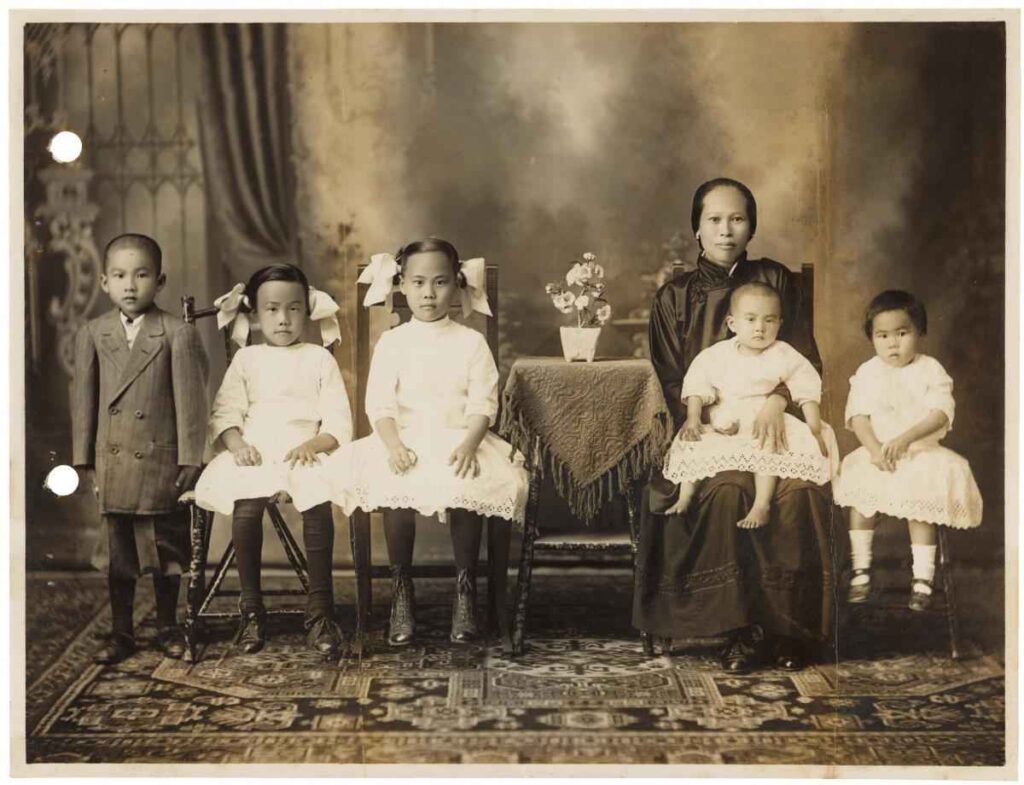Identity vs Role Confusion Age in Development

The “identity vs role confusion age” is a critical developmental stage in the human lifespan, particularly during adolescence. Coined by Erik Erikson, a prominent developmental psychologist, this stage represents a period of exploration and consolidation, where individuals seek to define who they are and what they will become in society. This article delves deeply into the psychological aspects of the identity vs role confusion age, discussing its significance, contributing factors, and potential outcomes.
Erik Erikson’s Psychosocial Stages

Erik Erikson introduced eight stages of psychosocial development, with each stage representing a pivotal moment in an individual’s life. The “identity vs role confusion age” corresponds to the fifth stage, which typically occurs between the ages of 12 and 18. During this period, adolescents experience profound changes—physically, emotionally, and cognitively. These changes provoke questions about their identity, purpose, and role within their peer group, family, and broader society.
Erikson believed that each stage is characterized by a psychosocial crisis that must be resolved for healthy development to occur. The identity vs role confusion age is particularly significant because it lays the foundation for the adult self. Successfully navigating this stage leads to a well-defined sense of identity, whereas failure can result in confusion about one’s place in the world and ongoing difficulties in forming meaningful relationships.
The Central Conflict: Identity vs Role Confusion
At the heart of the identity vs role confusion age is the struggle between identity formation and role confusion. Adolescents are tasked with answering the question, “Who am I?” This is not just about personal preferences, such as favorite music or clothing styles, but about forming a coherent sense of self that encompasses values, beliefs, career aspirations, and social roles.
- Identity Formation: During the identity vs role confusion age, adolescents experiment with different roles and ideologies. They may try out different groups of friends, explore new hobbies, or adopt different worldviews. These explorations are crucial for the development of a stable identity. According to Erikson, successful resolution of this stage results in fidelity—a sense of loyalty to oneself and the commitments one has made.
- Role Confusion: On the other hand, failure to successfully navigate the identity vs role confusion age can lead to role confusion. This manifests as uncertainty about one’s place in society, difficulty in making decisions, and a fragmented sense of self. Individuals who experience role confusion may struggle with commitment in relationships or career choices, as they lack a clear sense of who they are or what they want from life.
Influencing Factors During the Identity vs Role Confusion Age

Several factors influence an individual’s experience during the identity vs role confusion age. These factors include family dynamics, peer relationships, culture, and personal experiences.
- Family Dynamics: The role of the family during the identity vs role confusion age is crucial. Supportive families that allow adolescents the freedom to explore their identities while providing guidance can foster a strong sense of self. However, overly controlling or dismissive families may inhibit identity development, leading to confusion or rebellion.
- Peer Relationships: Peers play a significant role in the identity vs role confusion age. Adolescents often look to their friends for validation and may experiment with different identities based on their peer group’s norms. A supportive peer network can reinforce positive identity development, while negative peer pressure can exacerbate role confusion.
- Cultural Influences: Culture also shapes the identity vs role confusion age. Cultural norms, expectations, and values can either support or hinder an adolescent’s identity exploration. For example, in collectivist cultures, there may be more pressure to conform to family and societal expectations, which could limit the exploration of personal identity.
- Personal Experiences: Each individual’s experiences during the identity vs role confusion age are unique. Traumatic events, successes, failures, and personal achievements can all influence how an adolescent navigates this critical period. For example, a young person who excels in academics or sports may develop a strong sense of identity as a student or athlete, while someone who experiences failure or rejection may struggle with role confusion.
The Role of Social Media and Technology

In modern times, the identity vs role confusion age is increasingly influenced by social media and technology. Adolescents today are exposed to a vast array of identities and lifestyles through platforms like Instagram, TikTok, and YouTube. This constant exposure can both help and hinder identity development. On the one hand, social media can provide adolescents with opportunities to explore different identities and connect with like-minded individuals. On the other hand, the pressure to conform to idealized images and the fear of missing out (FOMO) can lead to role confusion and anxiety.
The identity vs role confusion age in the digital era is also marked by the blurring of online and offline identities. Adolescents may experiment with different personas online, which can either aid in identity formation or create further confusion about their true selves. The curated nature of online identities often leads to comparisons with others, potentially exacerbating feelings of inadequacy and role confusion.
Psychological Outcomes of the Identity vs Role Confusion Age
The psychological outcomes of the identity vs role confusion age can have long-lasting effects on an individual’s well-being. Successfully resolving the identity crisis leads to a strong sense of self and a clear direction in life. However, failure to resolve this crisis can result in various psychological challenges.
- Positive Outcomes: When adolescents successfully navigate the identity vs role confusion age, they develop a strong sense of identity. They are more likely to have higher self-esteem, a clearer sense of purpose, and healthier relationships. This sense of identity serves as a foundation for making important life decisions, such as choosing a career or forming a family. Erikson referred to this outcome as achieving “fidelity,” which is the ability to live in accordance with one’s values and beliefs.
- Negative Outcomes: Role confusion during the identity vs role confusion age can lead to several negative outcomes. These include low self-esteem, difficulty forming and maintaining relationships, and a lack of direction in life. Role confusion can also manifest in psychological issues such as anxiety, depression, and substance abuse. Adolescents who fail to develop a clear sense of identity may feel lost, directionless, and disconnected from themselves and others.
Interventions and Support During the Identity vs Role Confusion Age

Given the importance of the identity vs role confusion age, it is crucial to provide support and interventions to help adolescents navigate this period successfully. Parents, educators, and mental health professionals can play a vital role in this process.
- Parental Support: Parents can help adolescents during the identity vs role confusion age by providing a supportive and open environment for exploration. Encouraging independence while offering guidance can help adolescents feel secure in their identity formation. It is also important for parents to model positive behaviors and values, as adolescents often look to their parents for cues during this critical period.
- Educational Interventions: Schools can provide valuable support during the identity vs role confusion age by offering programs that promote self-exploration and decision-making skills. Career counseling, extracurricular activities, and peer support groups can all help adolescents explore their identities in a structured and supportive environment.
- Therapeutic Interventions: Mental health professionals can also offer important support during the identity vs role confusion age. Therapy can provide adolescents with a safe space to explore their identities, discuss their fears and anxieties, and receive guidance from a trained professional. Cognitive-behavioral therapy (CBT), for example, can help adolescents challenge negative thoughts and develop a more positive and coherent sense of self.
Case Study: Navigating the Identity vs Role Confusion Age
To better understand the identity vs role confusion age, let’s consider the case of “John,” a 16-year-old high school student. John is struggling with questions about his identity—he is unsure about his future career, his place within his peer group, and even his own values and beliefs. At school, John feels pressured to fit in with his friends, but he also feels a strong desire to stand out and pursue his interests in music and art.
John’s parents are supportive but have high expectations for him to excel academically and pursue a career in medicine. This creates tension for John, who feels torn between his passion for music and the expectations placed on him by his family. He begins to experience anxiety and uncertainty, feeling as though he does not know who he truly is or what he wants from life.
Through counseling, John begins to explore his identity more deeply. He learns to express his feelings to his parents and negotiate a balance between their expectations and his own desires. Over time, John develops a stronger sense of self, recognizing that he can pursue his passion for music while also considering other career options. By the end of the counseling process, John feels more confident in his identity and better equipped to navigate the challenges of the identity vs role confusion age.
Conclusion
The identity vs role confusion age is a crucial stage in psychological development, characterized by the search for self-identity and the resolution of role confusion. This period, typically occurring during adolescence, has profound implications for an individual’s future well-being. Erik Erikson’s theory highlights the importance of successfully navigating this stage to achieve a strong sense of identity, which serves as a foundation for adult life.
Several factors influence the experience of the identity vs role confusion age, including family dynamics, peer relationships, culture, and personal experiences. In the digital era, social media and technology have added new layers of complexity to this developmental stage, offering both opportunities and challenges for identity formation.
The psychological outcomes of the identity vs role confusion age can vary, with successful resolution leading to positive self-esteem, a sense of purpose, and healthy relationships, while failure can result in role confusion, low self-esteem, and psychological difficulties. However, with appropriate support from parents, educators, and mental health professionals, adolescents can successfully navigate this stage and emerge with a clear and coherent sense of identity.
Ultimately, the identity vs role confusion age represents a time of exploration, growth, and self-discovery. It is a pivotal moment in the journey toward becoming a fully realized individual, capable of making meaningful contributions to society while living in accordance with one’s values and beliefs. As such, it is essential to recognize and support the unique challenges and opportunities presented by this critical developmental stage.
